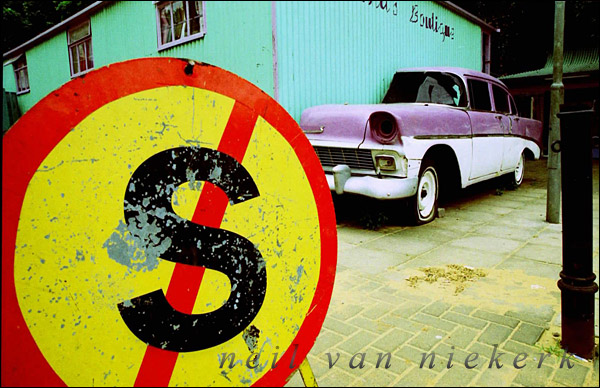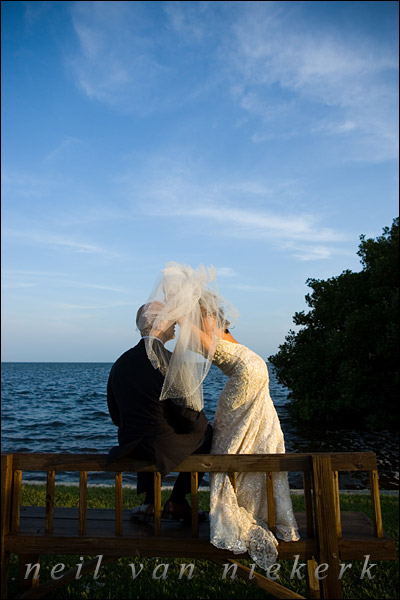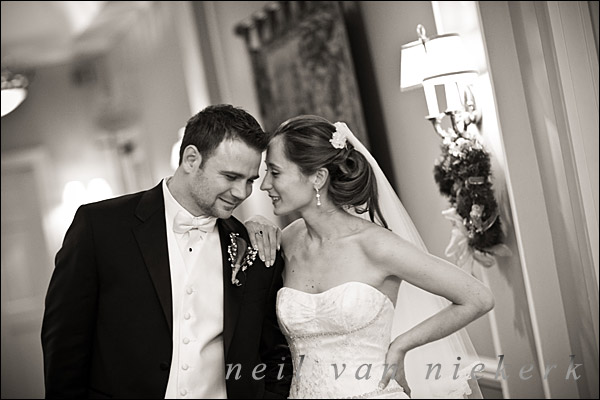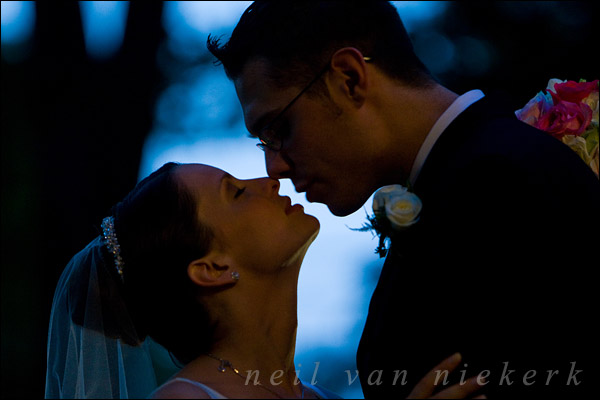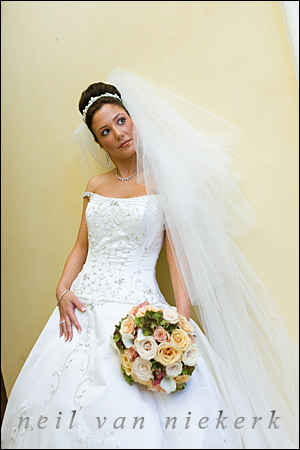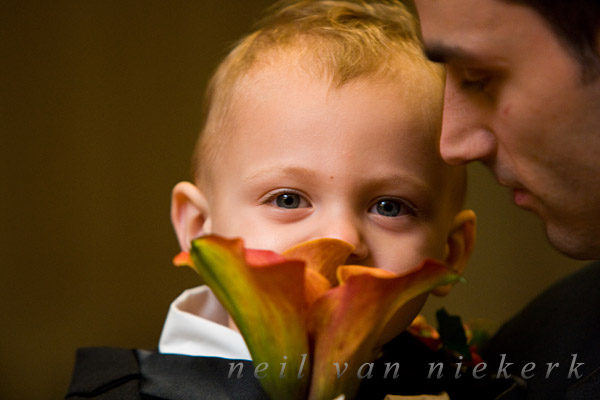Many photographers who have entered the industry in the last several years aren't readily aware that a number of the digital techniques and special effects available today in Photoshop, are actually based on processes that were available to film shooters of past years. One effect that seems to be a particular favorite of photographers recently is cross-processing - an effect where colors are made more vivid, and the tonality and contrast are skewed to create a high-fashion or slightly surreal effect. Fuji Sensia 200 exposed at 125 ISO - processed as C41 print film. Nikon F90 camera; Read more inside...
gear for destination wedding photography (Canon)
gear for destination wedding photography (Canon)
I enjoy photographing destination weddings- and I've been fortunate to photograph weddings in Aruba, Bahamas, Miami and Las Vegas. These are weddings are often in exotic locales. (Well, nearly everything will seem exotic outside of New Jersey, but I digress.) Even even though it sounds exciting to photograph in faraway places, there is a challenge that comes along with that - packing enough of my gear and getting it safely to my destination. It is even more of a challenge with restrictions placed on air travel. Since I Read more inside..."Dragging the Shutter" revisited
1/100 @ f1.6 @ 1000 ISO "Dragging the Shutter" is a term used to describe the technique of using a slow enough shutter speed to allow a measure of ambient light to register when using flash. This term originates from an era when photographers would determine correct flash exposure for on-location photography by : - setting the ISO speed according to the film used, - setting the aperture according to subject distance (depends on flashgun's guide number), - then using the shutter speed as the ONLY way of independently allowing more ambient light in, slowing the shutter speed far lower Read more inside...
using slow shutter speeds with a hand-held camera
(1/20th @ f2.8 @ 1250 iso)
using slow shutter speeds
I am frequently asked whether I use a tripod at all to help overcome the slow shutter speeds that I often shoot at. The question also often relates to shooting hand-held, below the arbitrary value of 1/60th of a second. The choice of shutter speed at which you will get a sharp (enough) image will depend on a number of factors, such as how fast your subject is moving and at what angle compared to your camera, and whether you are panning with your subject. And also choice of lens, and camera's sensor size, and your own ability Read more inside...choosing your direction
specifically choosing your direction of bounce flash
The reason why I want (if possible) only indirect light from my on-camera flash, is that any direct flash looks too harsh. Here's a typical example: As you can see, using the Stofen helps to disperse some light and is a huge step up from direct flash. But you can also see in the entire frame that the light from top to bottom is uneven. In the close-up you can see how there is a hard shadow on the bride's face, as well as some specular reflection on her skin from the flash directly from the Stofen. And in some way, any time Read more inside...burning out / melting your speedlights & flashes
burning out / melting your speedlights & flashes
The obvious question that comes up with bouncing flash behind you, is that they do tend to fire at full power or close to full power. If you shoot events, where you need to take repeated shots with your on-camera flash, they do take a beating and even risk even burning out. I do hammer my speedlights, especially when I use the Quantum 2x2 battery packs. This doesn't bother me greatly, since I regard my speedlights in a way, as consumable items. They will become unrepairable at some point. Cost of doing business as an event Read more inside...using bounce flash outdoors
using bounce flash outdoors
While the bounce flash techniques described on these pages are heavily dependent on shooting indoors which provide those places to bounce flash off ... it wouldn't seem possible to use these techniques outdoors. After all, you can't bounce flash off the clouds. (Although we've all seen photographers attempt this outside.) So while there are obvious limitations in applying these bounce flash techniques outdoors, there are times when these techniques can still be quite effective. This example, also shown in the tutorial pages is of this image taken Read more inside...my choice of on-camera flash modifiers
my choice of on-camera flash modifiers
There is a fundamental principle in lighting : the larger your light source, the softer your light. Using any of the myriad of flash modifiers that are on offer, helps in achieving that - spreading the light from the on-camera Speedlight much wider, thereby creating softer light that direct flash would've given. However, (and this is a big however), these flash modifiers also throw light forward. Ultimately all flash modifiers do the same thing - they disperse a lot of light around the room, while throwing some measure of light directly Read more inside...How to photograph lightning
How to photograph lightning
The breathtaking sight of lightning splitting the evening sky has to be one of the more dramatic subjects to photograph... and also surprisingly easy. A vivid burst of purple lightning over this store, framed by the arch of the veranda I was sheltering under, contrasts perfectly with the yellow cast of the artificial light. Of a series of 10 photos I took here, there were 2 usable images with lightning. The strong color cast are from the street-lights, and having used daylight-balanced film. April '91 .. Colesberg; South Africa Pentax Super-A; Read more inside...- « Previous Page
- 1
- …
- 18
- 19
- 20
